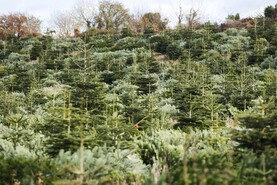Interpreting the word “forestry” is raised by Jo O’Hara in the Implementation of the Mackinnon Report. She defines forestry as “the craft, science and practice of managing trees for a specified purpose”.
This definition is clear, provided the forest owner is the one who decides and clearly understands the specified management purpose.
The objective of State forestry over the past 100 years has been to maximise yield and income from its afforestation and reforestation programmes by planting up to 95% conifers. Since the establishment of Coillte, the private sector has taken over afforestation with an obligation now to plant 30% native species and to increase coniferous diversity. Under this requirement, the singular specified purpose becomes multipurpose.
The forest owner can maximise financial returns on 70% of the productive conifers to support the laudable but less tangible benefits of native woodland.
There is no expectation of a financial objective by the State from native woodlands as outlined by Dr John Cross and Kevin Collins, co-authors of Management Guidelines for Ireland’s Native Woodlands. They list seven objectives in native woodland establishment and conservation.
These include the expansion of the native woodland area, maintenance of species diversity and control of invasive species.
The objective to generate a financial return is absent. This is not to say that native woodlands won’t generate a timber income but this is unlikely during the lifetime of most growers. It is key that woodland owners, the forest industry and the public understand the implications of multipurpose forestry.
There are undoubted non-wood benefits in this approach, but there are also timber yield reductions that will negatively affect forest owners profitability as well as long-term supply to downstream timber industries.
Project Woodland needs to address these issues to achieve a balanced forestry programme that depends heavily on private sector investment.






 This is a subscriber-only article
This is a subscriber-only article











SHARING OPTIONS: